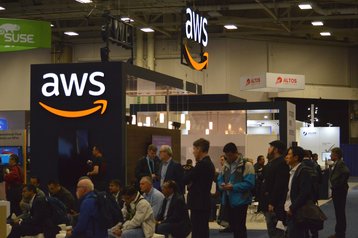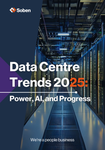Amazon’s cloud unit is now a $100 billion-a-year business.
The company posted its Q4 2024 quarterly earnings results this week, which rounded out another strong quarter for its Amazon Web Services (AWS) division.
AWS sales increased 19 percent year-over-year to $28.8 billion across Q4. Operating income for the unit was $10.6 billion, compared with $7.2 billion in Q4 2023.
For the full year 2024, AWS sales increased 19 percent year-over-year to $107.6 billion, crossing the $100 billion mark for the first time. The company posted net sales of $90.8 billion in 2023.
AWS operating income was $39.8 billion across all of 2024, compared with an operating income of $24.6 billion in 2023.
Andy Jassy, president and CEO, Amazon, said: “When we look back on this quarter several years from now, I suspect what we’ll most remember is the remarkable innovation delivered across all of our businesses, none more so than in AWS where we introduced our new Trainium2 AI chip, our own foundation models in Amazon Nova, a plethora of new models and features in Amazon Bedrock that give customers flexibility and cost savings, liberating transformations in Amazon Q to migrate from old platforms, and the next edition of Amazon SageMaker to pull data, analytics, and AI together more concertedly.”
For the wider company, net sales increased 10 percent to $187.8 billion in the fourth quarter; operating income increased to $21.2 billion in the quarter. Net income increased to $20 billion in the fourth quarter.
Capital investments were $26.3 bullion in the fourth quarter; the company said the run rate will be “reasonably representative” of its investment rate this year. As with 2024, the “majority” of the spend will go towards AWS.
The expected $100 billion annual capex, up from $83 billion last year, also includes e-commerce warehouses and offices. Microsoft expects its 2025 capex to hit $80 billion, Google $75 billion, and Meta $65 billion.
This year also saw the launch of Stargate, OpenAI's data center venture, which pledged to spend $100 billion 'immediately.'
During the earning call, Jassy said: “The faster we grow, the more capex we end up spending because we have to procure data center and hardware and chips and networking gear ahead of when we're able to monetize it. We don't procure it unless we see significant signals of demand.”
“However, it is true that we could be growing faster, if not for some of the constraints on capacity.,” he added, saying those constraints "come in the form of chips from our third-party partners, power constraints, and supply chains like motherboards.
“I predict those constraints really start to relax in the second half of 2025. And as I said, I think we can be growing faster even though we're growing at a pretty good clip today," he said.
Amazon reduces server lifespans
Interestingly, after years of looking to increase the life expectancy of its IT hardware, Amazon is now dropping how many years servers are expected to be in operation.
“In Q4, we completed a useful life study for our servers and network equipment and observed an increased pace of technology development, particularly in the area of artificial intelligence and machine learning,” said Brian T. Olsavsky, Amazon CFO, during the earnings call. “As a result, we're decreasing the useful life for a subset of our servers and networking equipment from six years to five years, beginning in January 2025.”
The company anticipates this will decrease its 2025 operating income by approximately $700 million.
Amazon started increasing the useful life of its servers from five to six years in February 2024.
Olsavsky also noted that the company retired a subset of its servers and network equipment early – taking a $920m expense hit in the process from accelerated depreciation and related charges. This is also expected to decrease full-year 2025 operating income by approximately $600m.
Jassy on DeepSeek
On DeepSeek, the Chinese AI models that claim to reduce the need for AI hardware without compromising results, Amazon is confident it is a boon for the industry. Amazon already offers DeepSeek models on its platform.
“Like many others, we were impressed with what DeepSeek has done,” Jassy said. While he admitted such improvements might lead to companies spending less per unit of infrastructure, it encourages spending in the long term.
“They get excited about what else they could build that they always thought was cost-prohibitive before, and they usually end up spending a lot more in total on technology once you make the per unit cost less,” he said. “And I think that is very much what's going to happen here in AI, which is the cost of inference will substantially come down.”







